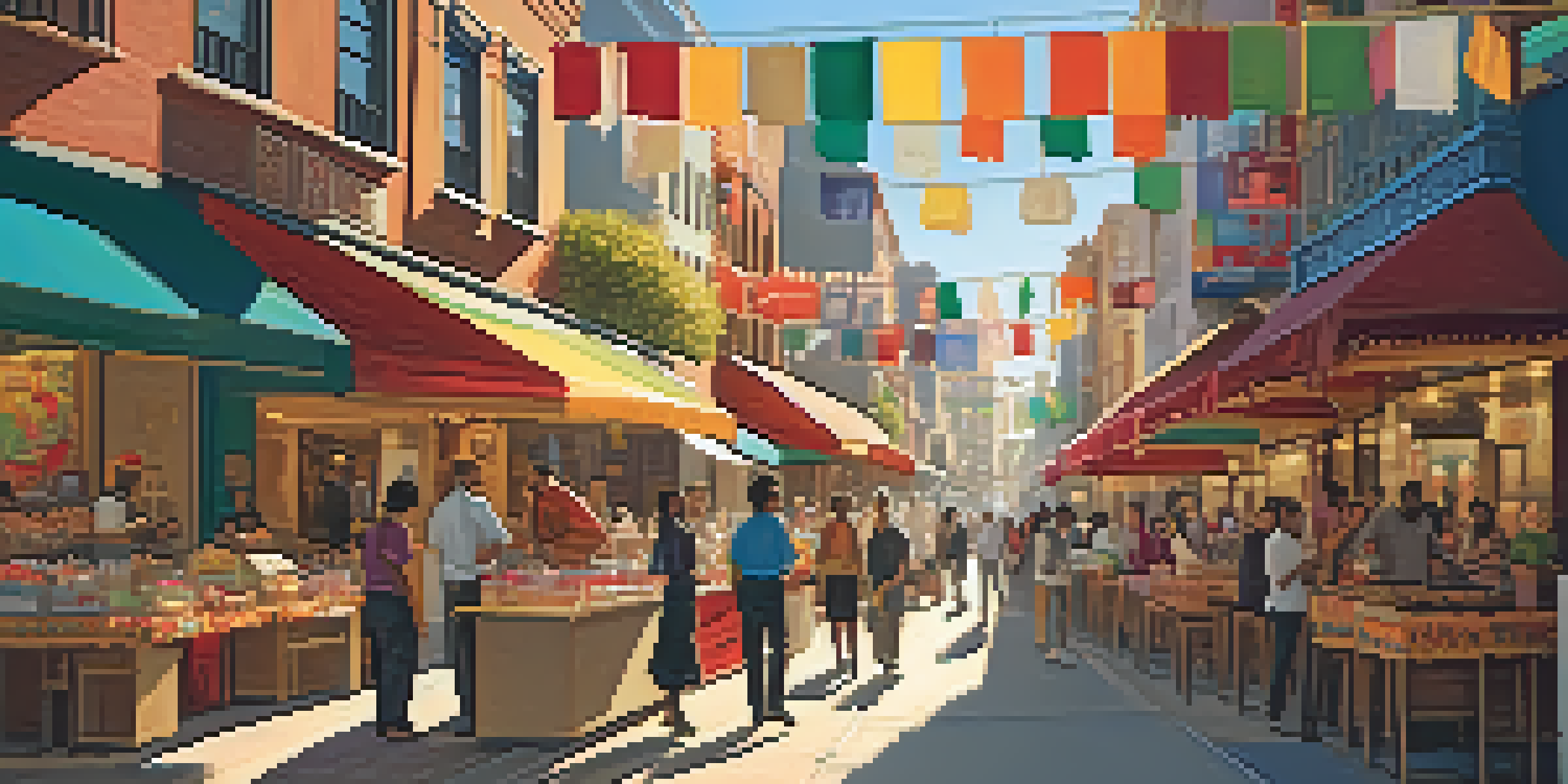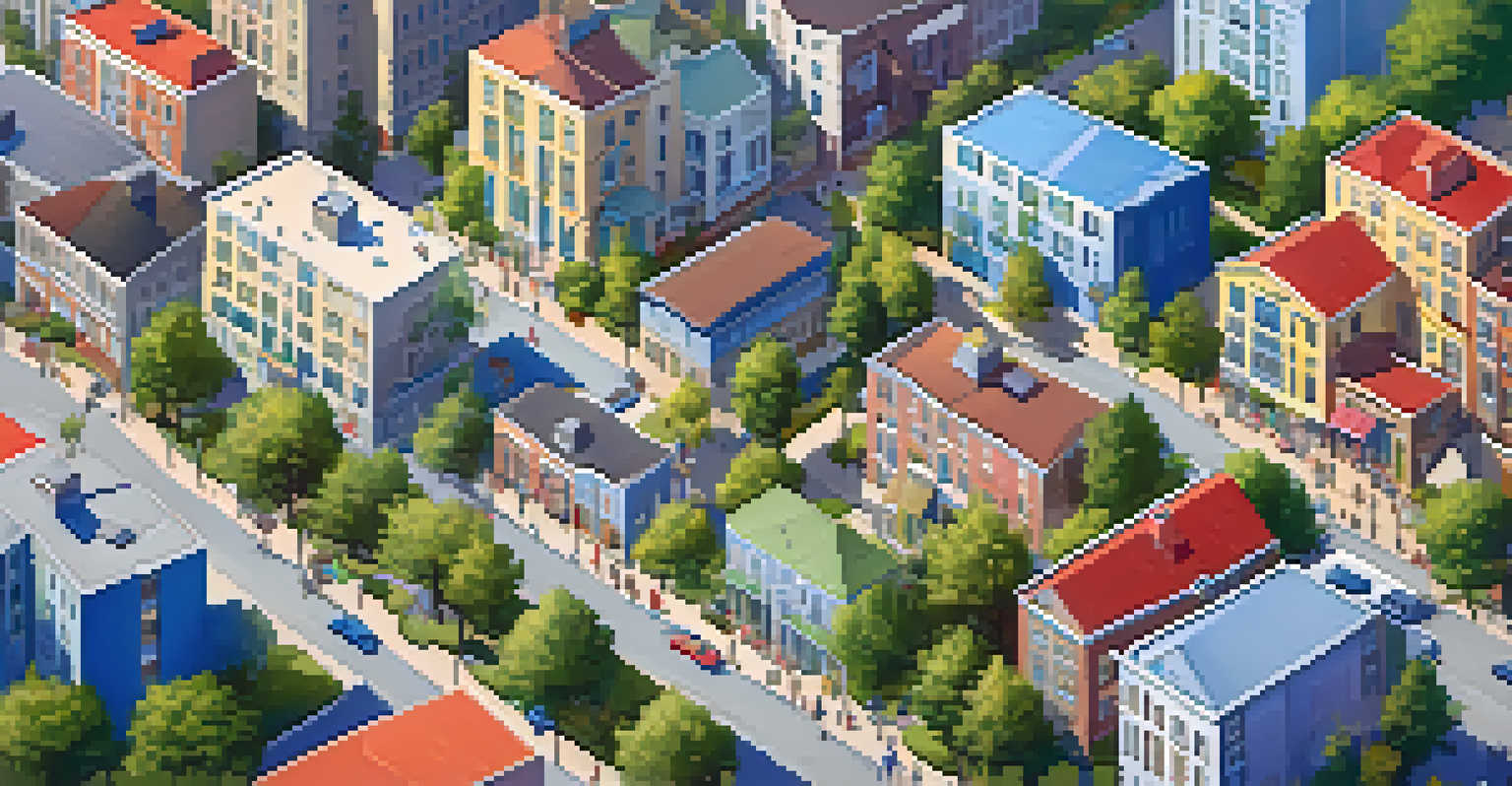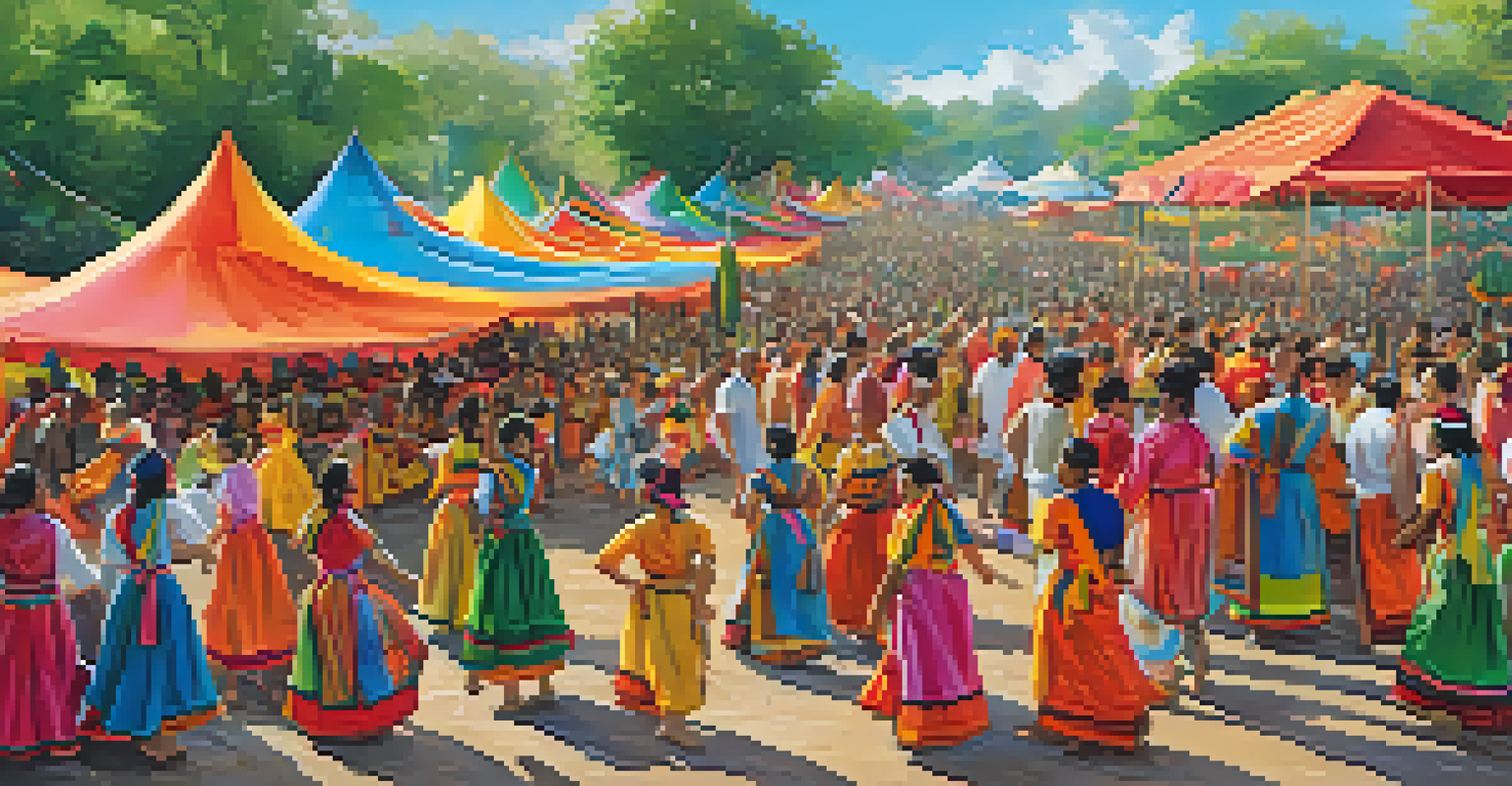How Cultural Diversity in Areas Affects Property Values

Understanding Cultural Diversity and Its Importance
Cultural diversity refers to the variety of cultural groups within a community. This includes differences in language, ethnicity, traditions, and values. Understanding this concept is crucial because it affects how neighborhoods develop and thrive.
Diversity is not about how we differ. Diversity is about embracing one another's uniqueness.
When a community embraces cultural diversity, it often leads to a vibrant atmosphere. Think of it like a colorful tapestry where each thread adds to the overall beauty. This richness can attract individuals and families seeking a dynamic place to live.
Moreover, diverse neighborhoods can foster creativity and innovation. Different perspectives promote new ideas and solutions, making these areas appealing not just to residents, but also to businesses looking to establish themselves.
How Cultural Diversity Influences Property Demand
The demand for property is often linked to the desirability of a location. Areas with cultural diversity frequently draw interest from a broader range of buyers. This is because many people prefer living in communities that reflect their values and experiences.

For instance, neighborhoods with a mix of cuisines, festivals, and cultural events can draw in those who appreciate these offerings. A vibrant cultural scene can be a significant selling point when buyers are considering where to settle down.
Cultural Diversity Boosts Property Appeal
Neighborhoods rich in cultural diversity attract more buyers due to their vibrant atmosphere and variety of amenities.
As demand increases, so do property values. When more people want to live in a culturally rich area, it can lead to bidding wars, further driving up prices.
The Role of Amenities in Diverse Communities
Cultural diversity often brings a variety of amenities to a neighborhood, such as restaurants, shops, and recreational spaces. These amenities not only enhance the quality of life for residents but also attract potential buyers. Imagine walking through a neighborhood with a delightful mix of cafes and shops from different cultures; it creates an inviting atmosphere.
Cultural diversity is our greatest asset, a key to innovation and economic growth.
Moreover, unique amenities can make a neighborhood stand out in the real estate market. Buyers are often willing to pay a premium for an area that offers them a rich cultural experience right at their doorstep.
In addition, diverse communities tend to have more events and activities that cater to a variety of interests. This not only promotes social interaction but also increases the overall appeal of the area.
Cultural Diversity and Economic Growth
Economic growth is often linked to diverse populations. When people from various backgrounds come together, they bring different skills and ideas, which can lead to innovation and entrepreneurship. This economic dynamism can enhance property values in the area.
For example, diverse neighborhoods may attract businesses that cater to various cultural groups, creating jobs and stimulating the local economy. As businesses flourish, property values can rise due to increased demand for housing from new employees.
Education Enhances Property Values
Quality schools in diverse areas increase housing demand as families seek inclusive educational environments.
Additionally, successful businesses often lead to better local services and infrastructure, further enhancing the attractiveness of a neighborhood. This makes it a win-win for both residents and property investors.
Gentrification: A Double-Edged Sword
While cultural diversity can positively influence property values, it can also lead to gentrification. This process occurs when wealthier individuals move into a neighborhood, driving up prices and potentially displacing long-time residents. It's a complex issue that often arises in thriving diverse areas.
For instance, as property values increase, original residents may find it hard to keep up with rising rent or property taxes. This can lead to a loss of the very cultural diversity that made the neighborhood attractive in the first place.
Balancing growth and preservation is crucial for maintaining vibrant communities. Local governments and residents must work together to ensure that the benefits of diversity are enjoyed by everyone.
The Impact of Schools and Education on Property Values
Education plays a significant role in property values, particularly in diverse areas. Quality schools often attract families, which increases demand for housing in those neighborhoods. A multicultural school environment can also appeal to parents who value diversity in education.
Moreover, schools that celebrate cultural diversity can enhance community engagement. Events that showcase various cultures can foster a sense of belonging and attract potential homeowners who appreciate such initiatives.
Gentrification Challenges Diversity
While diversity can elevate property values, it may also lead to gentrification, risking displacement of long-time residents.
As property values rise in these desirable school districts, both current homeowners and investors can benefit. Investing in education and diversity can be a smart strategy for boosting local real estate markets.
The Future of Property Values in Diverse Communities
Looking ahead, the trend of increasing cultural diversity in neighborhoods is likely to continue. As society becomes more interconnected, people are increasingly seeking out communities that reflect their values and experiences. This shift will likely keep pushing property values upward in culturally rich areas.
However, it’s essential to address the challenges that come with this growth. Ensuring that all voices are heard and that communities remain inclusive will be crucial to maintaining the unique character of diverse neighborhoods.

Ultimately, the interplay between cultural diversity and property values will shape the future of real estate. Communities that embrace diversity while fostering economic growth can expect to see their property values thrive.